Here at Shalom House, we handpick our unique Judaica products for you to enjoy. Each of the luxurious items you see on our site comes with a story, deep with meaning, from the realms of our Jewish heritage and time-old tradition.
This section holds our blog posts, where we share with you, our trusted followers, the narratives behind our versatile categories of exclusive Judaica items. Read the posts below to learn more about how our products relate to and can enhance your everyday Judaica experiences.
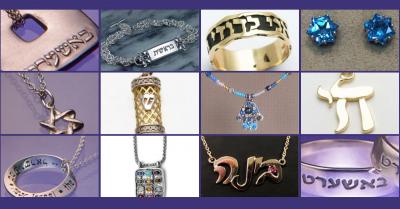
Jewelry is the most universal means of expressing something special, maybe to indicate belonging to a group or as a symbol of individuality, to pronounce your social status or to enhance your own or someone else’s inner beauty, or, perhaps, simply to show your love for another. And the notion of jewelry is old, truly ancient, predating history itself. Archeological digs in the caves of our prehistoric ancestors tell us of jewels created roughly 100,000 years ago. These first jewels were made of animal bones, stones and wood, and were of a more practical nature, helping “cavemen and women” to secure their clothing or connect pieces of leather. Archeological evidence shows, however, that our predecessors soon began using these trinkets to adorn themselves and as ornaments.
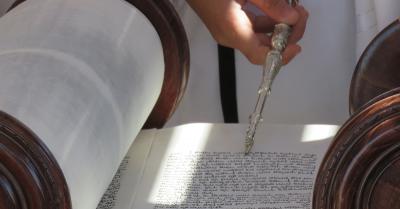
It's the final countdown! Just like the song says, we countdown to Shavuot!
The Feast of Weeks, or Pentecost as it was used to be called in English, is the holiday at the end of Sefirat HaOmer. Shavuot marks the conclusion of the seven week counting of the Omer, which starts right at the end of Passover. 49 days where the jewish people makes sure to count, mention which day of the count it currently is, at the end of the day, after the evening's prayer.
Why do we countdown from Passover to Shavuot?
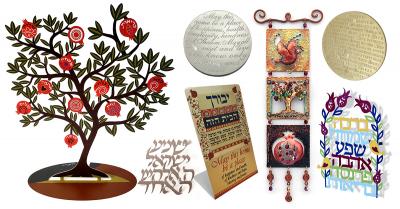
We here at Shalom House, think that the fact that you say 'Good Morning', means you're a good person.
Why? Because it means you wish others well.
Your 'Good Night' holds much meaning, your 'Shabbat Shalom' comes from the bottom of your heart.
You truly want the person next to you to have a 'Happy Holiday'.
When wishing well to others, both sides benefit - the person wishing, or blessing, is filled with the warmth of a true intention, and the person being blessed, feels touched by the love of another.
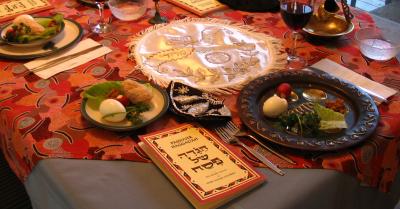
We like to say that we slave to prepare for this holiday and are freed during the Seder, same way as our ancient ancestors were. This holiday beats all others when it comes to planning ahead. Are you entertaining or going to someone else's house for Seder? Have you thought of what to cook? What will you wear? Which room will you clean first and which last? You know how important the order of room cleaning is, since we don't want anyone spreading hametz crumbs all over a room we already declared as chametz free.
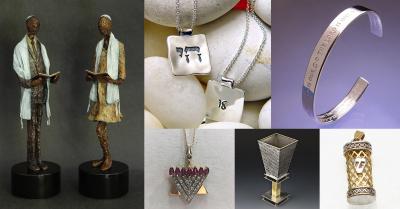
She's such a great girl, isn't she? He's such a good boy, I know.
Soon you won't be able to refer to them as kids anymore, it's time for their Bar and Bat Mitzvah!
You remember the day they were born, you might even recall their parents as kids, and now these kinderlach are all suited up to join the burden of the Mitzvahs with all the excitement that comes with it.
Several cultures and religions have their own version of Bar and Bat Mitzvah. Tracing these different traditions back, reveals that there's something very special about that age - 12 for girls and 13 for boys. It's the time where kids grow up, leaving behind their time playing with toys on the rug.
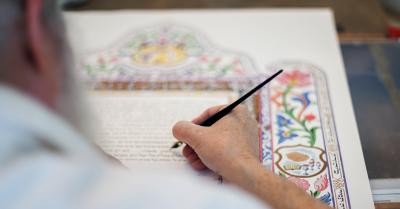
Love is in the air, the groom is just “a bit” nervous, the bride is pensive, and the parents on both sides are beaming. The ceremony begins, emotions are high, and everyone is waiting for those unforgettable moments – the ring, lifting of the bride’s veil so she may sip of the wine and, of course, the dramatic breaking of the glass, marking the end of the nuptials and the beginning of a new life, together. But then, in the middle of the Huppah (the name of the traditional Jewish wedding canopy and also used to refer to the ceremony itself), the Rabbi unfurls the Ketubah and reads through it as if nothing else matters.
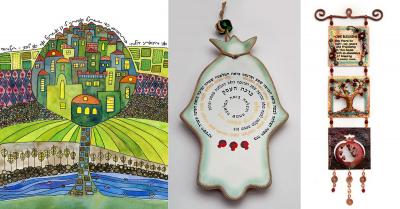
Why do we decorate our homes? Why do we diligently go from store to store, wearing out our heels, in search of decorative items to place on our walls?
Many of us don’t even spend much time in our home, but still, we put much thought into what our private space will look like, because it changes the way we feel.
They way we feel when we’re at home, and the way we feel about our home are strongly affected by the experiences we have while there, at home. We all want to feel safe at our homes, so we have our locked doors and gates.
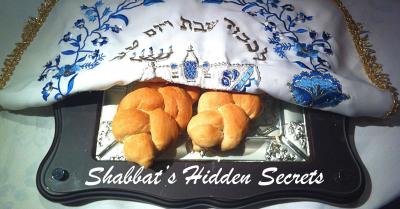
As one of Judaism’s central themes and considered holier than all other days of the week or year, save for Yom Kippur, much and more has been said about Shabbat. From the Torah providing two distinct reasons to keep the Shabbat (mentioned later on) and Shabbat being mentioned numerous times throughout the sacred texts, to the formation of countless Shabbat related symbols and artifacts and onto fervent scholarly and political debate spanning the ages (an entire tractate of the Talmud is dedicated to Shabbat). Up to this very day, there are few topics in Judaism that have captured our collective consciousness more than the last day of the week.
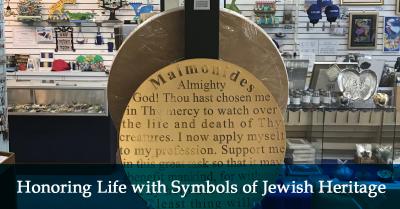
Life. Perhaps more than any other religion, life sits at the heart of Judaism, valued above all. In fact, Chazal (the Jewish Sages) state that safeguarding life comes before any other mitzvah, basing this (amongst others) on Leviticus 18:5: “Ye shall therefore keep My statutes, and Mine ordinances, which if a man do, he shall live by them: I am the LORD.” Naturally, it follows that the Jewish faith offers an abundance of lifecycle events to celebrate our existence, as well as opportunities to mark life’s non-religious moments in a Jewish fashion.
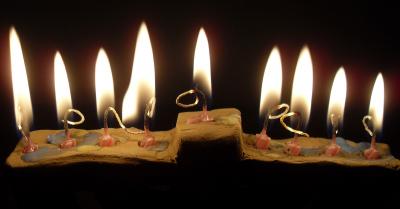
Hanukkah is right around the corner and the excitement is starting to bubble up to the surface.
The traditional story of Hanukkah is a truly inspiring one; Filled with bravery, tragedies and miracles, it proudly teaches us that we should always trust Hashem. From the Hanukkah story, we learn that when we put our faith in the creator, good things happen. Good things like awesome Hanukkah parties and being saved from vengeful enemies. If our tradition teaches us one thing, it’s that united together we are strong.
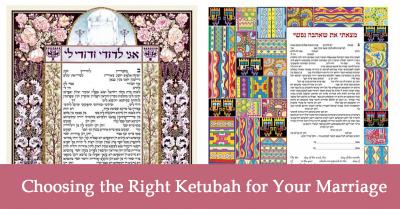
The Ketubah, the ancient Jewish “marriage contract” that, in a sense, formalizes the bond between man and wife, has and continues to be a central part of any Jewish wedding. Historically and traditionally, the Ketubah is a binding legal document that records a groom’s obligations to his bride, including in the case of his death or divorce. Today, more liberal Jewish thinking opts to move away from the traditional texts, preferring Ketubot (plural of Ketubah) that are even handed towards both the groom and the bride and are based in the view of marriage as a pact of love and partnership, not a legal instrument.
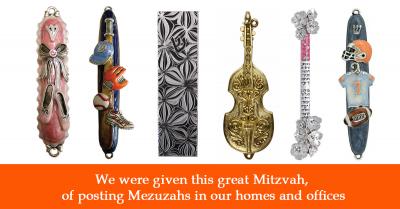
Why not enjoy life? Why not turn lemons into delicious lemon cake? We’re a happy people, we’re known for our good humor, so let’s prove to ourselves and to the world that our traditions and mitzvahs are a great piece of lemon cake to enjoy!
What are we going on about? About mezuzahs, of course!
You’re probably wondering what’s the connection between lemons and mezuzahs, so here it is: We were given this great Mitzvah, of posting Mezuzahs in our homes and offices.
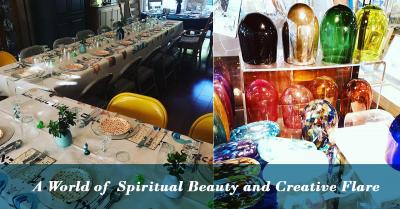
What is the first thing that comes to mind when you hear the words “Jewish Art”? Marc Chagall, Yaacov Agam or Moritz Oppenheim? There is a good chance you have heard of these famous Jewish Artists. It is less likely, however, that you have heard of Moses Ezekiel and Audrey Flack, and did you know that Amadeo Modigliani, Camille Pissarro and Mark Rothko were all Jewish? You might think of the world famous Bezalel Academy of Art and Design in Jerusalem, which takes its name from the first recognized Jewish Artist, the Biblical Bezalel. Perhaps your mind’s eye sees a beautifully decorated Passover plate or Shabbat candle holders, or maybe a simple kabalistic talisman, such as the “Hamsa ” that you wear around your neck? The true beauty of Jewish art is that it’s all of these and much more.
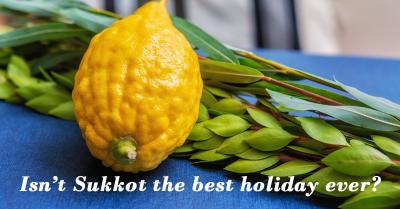
Isn’t Sukkot the best holiday ever? Well, it’s right up there with Passover, Rosh HaShana, Purim and Shavuot! Okay, all holidays are awesome, but Sukkot is special. It’s connected with unique memories and smells of grass, outdoors and visiting the neighboring Sukkas.
This is a holiday where we choose to leave our homes, we agree to move out of our air conditioned comfort zones and live outside, under the skies. There might be some bugs involved, there’s often a cat around, and yet, we mount a table in the Sukkah and sing our holiday songs for all to hear.
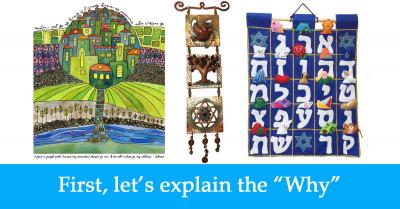
When we think of decorating our homes, many thoughts and feelings come to mind. For some of us it’s a task, to be avoided and perhaps to be done with so that empty box next to the item list could finally be checked with a shiny V. But for the rest of us, the creative lot, the ones who lie awake at night contemplating on the right shade of peach to go with the throw rug, for those who are probably reading this article right now, home decor is a way of life. Those are the people who get excited when they see an empty wall, the ones who get a phone call when a friend needs an idea for a new living room look.
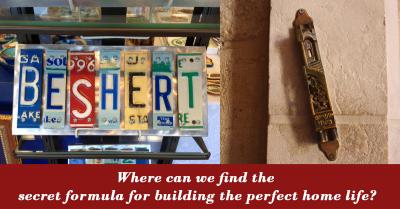
What does it take to make a home? Is there a simple recipe to creating that safe space we all think about when the word Home comes to mind? Where can we find the secret formula for building the perfect home life?
We all carry those nostalgic memories with us, of the place we grew up in. memories of a happy childhood, with our siblings, cousins and close friends. Flashes of smiles, games and adventures. Many of which are reconstructed from yellowing photos aided by memory. More than a few of our early memories of our home life are related to food. Holidays and shabbat meals are the perfect setting to create those home life memories which last a lifetime in our minds. We have those vivid recollections of the family sitting together, eating and conversing. Sometimes we can even remember the pattern on the plate and the smell of the food.
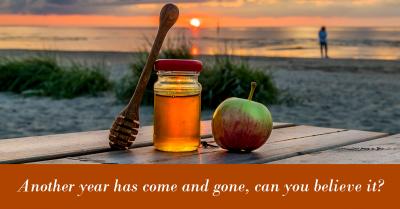
Another year has come and gone, can you believe it? Time flies as we live our lives, raising families, gathering experiences and earning more smile wrinkles.
The high holidays are right around the corner and this is just the time to stand still and smell the crisp night air. If we pay close attention, we might be able to notice exactly when it happens, that moment when summer starts to fade out in order to make room for autumn. When the weather gets cooler and looking at pomegranate trees, we start to see that majestic fruits in bloom.
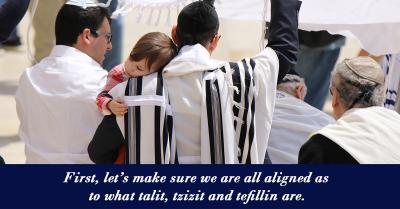
“TTT”, the name of a DJ or hip-hop song? Well, if you consider Shacharit (morning prayers) to be a form of Jewish rap, then it is in a way. TTT stands for “talit, tzizit, tefillin” representing the Triple Crown of Judaism's daily rituals. You are probably familiar with these items, their purpose and, perhaps, their biblical origins, however, you might be wondering how we went from the biblical references of “signs” and “frontlets” to big black boxes and from “tchelet” (light blue) to ornate prayer shawls, and what about those strange undergarments with strings hanging from their corners? In the following 2 part blog post we attempt to shed some light on these questions and more.
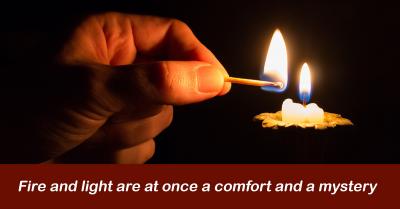
Since the beginning of time, man craved fire. We’re told fire was accidentally discovered at first, and quickly utilized for light, warmth and even cooking as time moved along.
Our holy Torah tells us many stories about fire. Moses heard the Lord’s voice coming from the Burning Bush, an unquenchable source of fire. We know the stories of the Vigilant Light with its ever bright flames, illuminating the halls of our holy temple, Ben HeMikdash, used to make sacrifices to thank Hashem.
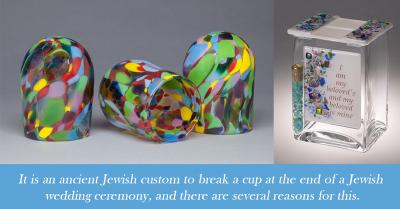
Breaking a cup in a marriage ceremony was originally cited in the Talmud, and the reason given is that we should limit our joy and laughter in this world, presumably until Messiah comes.
Nevertheless, the Talmud attaches importance to the cup’s shape and value. The Talmud describes breaking very valuable glass cups, which is not commonly done nowadays. Nevertheless, breaking a very expensive cup is liable to be a little depressing!
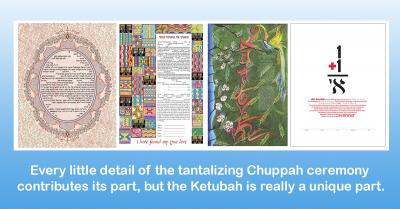
Is your wedding day coming up? Is one of your children getting married soon? Is a close friend to be wed? If you answered ‘KEN!’ to either of these questions, congratulations!
With a close wedding coming up, you can probably feel that rush of excitement coursing through your veins.
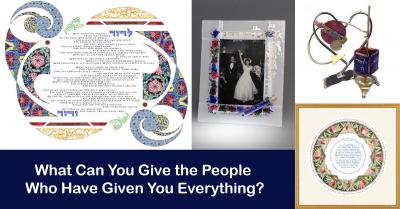
As we grow older our appreciation and gratitude towards the kind people who brought us into this world enhances. We grow up in the home our parents built for us after years of dreaming about a family, we are that dream come true. Hand painted drawings made by our younger selves and our children still decorate our parents’ fridge, showing the talent being passed from one generation to another.
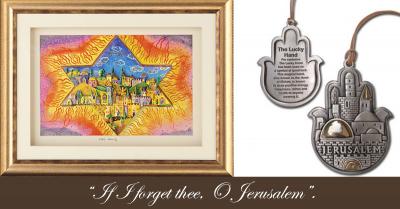
Think of the last time you went to a fun jewish wedding; It always starts with that ever so emotional chuppah, the excited chassan concentrating on breaking the glass underfoot, the rabbi reading the ketubah, and of course, the momentous chanting that forever keeps our holy city of Jerusalem in our heads and hearts - “If I forget thee, O Jerusalem”. Who amongst us hasn’t shed a tear or added an agreeing nod upon hearing these timeless words, and at such an important moment - the finishing statement of the chuppah.
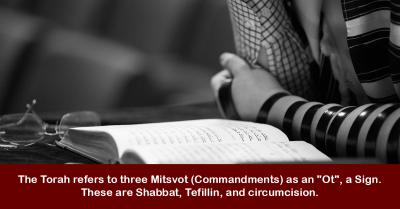
The commentary, Tikun Tephillah, explains that we don’t find the term, “Tefillin” used anywhere in the Bible. The earliest mention of this term is in the Mechiltah and in the Tanchumah, written about 100 years before the destruction of the second Temple. The word’s source is תפל, meaning tightly attached, as we see in Ezekiel, where it says, "והנם טחים אותו תפל", i.e. they are plastering something snugly. Another example is in the Talmud, where it says that a woman prefers one portion (of wealth), together with a close relationship with her husband, rather than nine portions by herself. This name, “Tefillin", explains why we wear Tefillin, (or “Totafot”, Ornaments, as the Torah calls them). We wear a Sign to show us that we are set apart from other nations and that we cleave to G-d.
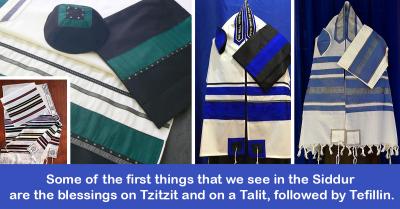
The Shulchan Aruch gives another reason for this, i.e. that we go from a lower holiness to a higher one - Tefillin. In the Beit Yosef he gives yet another reason, that whatever is done more regularly takes precedence. Since we don’t lay Tefillin every day but do wear Tzitzit and a Talit every day, then the latter take precedence. In addition to all this, the Siddur Otsar Hatephilot notes that the Mitzvah of Tzitzit is equivalent to all the other Mitzvot, as opposed to Tefillin. Therefore, the former takes precedence.
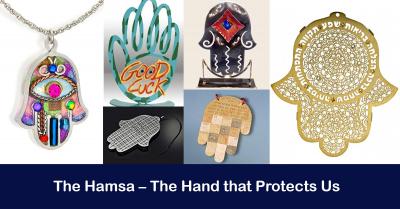
On October 2nd 1977, Dusty Baker and Glenn Burke of the Los Angeles Dodgers professional baseball team, in celebration of Mr. Baker’s 30th home run of the season, gave each other the first documented “High Five”, unawares of the undying fad they had kicked off. Neither did they know that they were, in practice, tapping into an age-old symbol of safety and good fortune – the “Hamsa”, which is seeing a massive revival as a signal of hope and peace in the modern world.

Tzedakah. Translated by some as “charity”, by others as “philanthropy” and by others yet as “giving”. The truth, the “Emet” is that “Tzedakah” embodies all of these and more, and Tzedakah boxes, those small plain or ornate boxes kept in homes and places of business, allow us to perform the important mitzvah of Tzedakah at any time and nearly any place, anonymously providing for those in need.